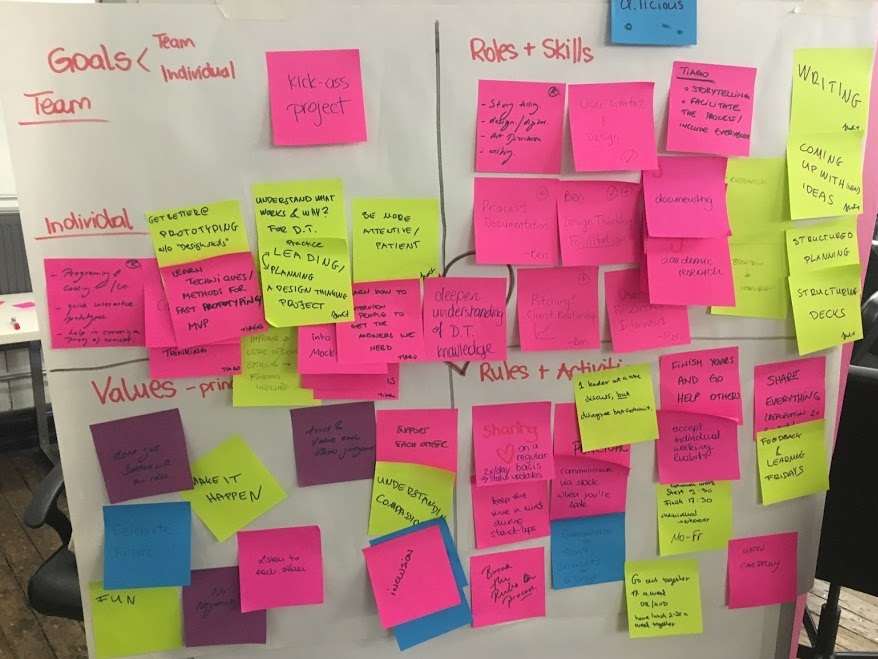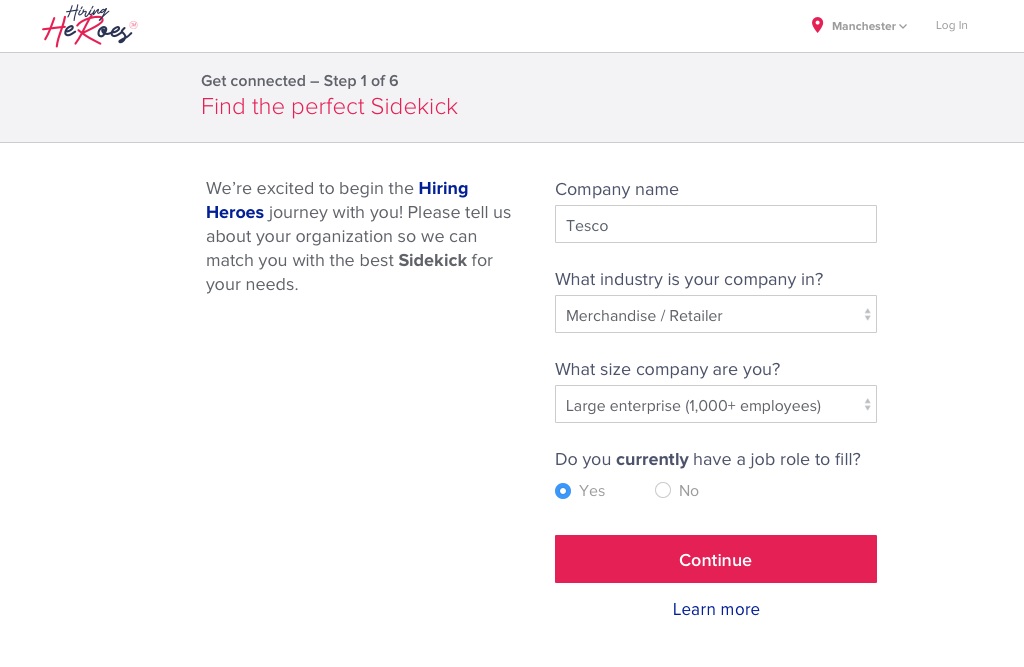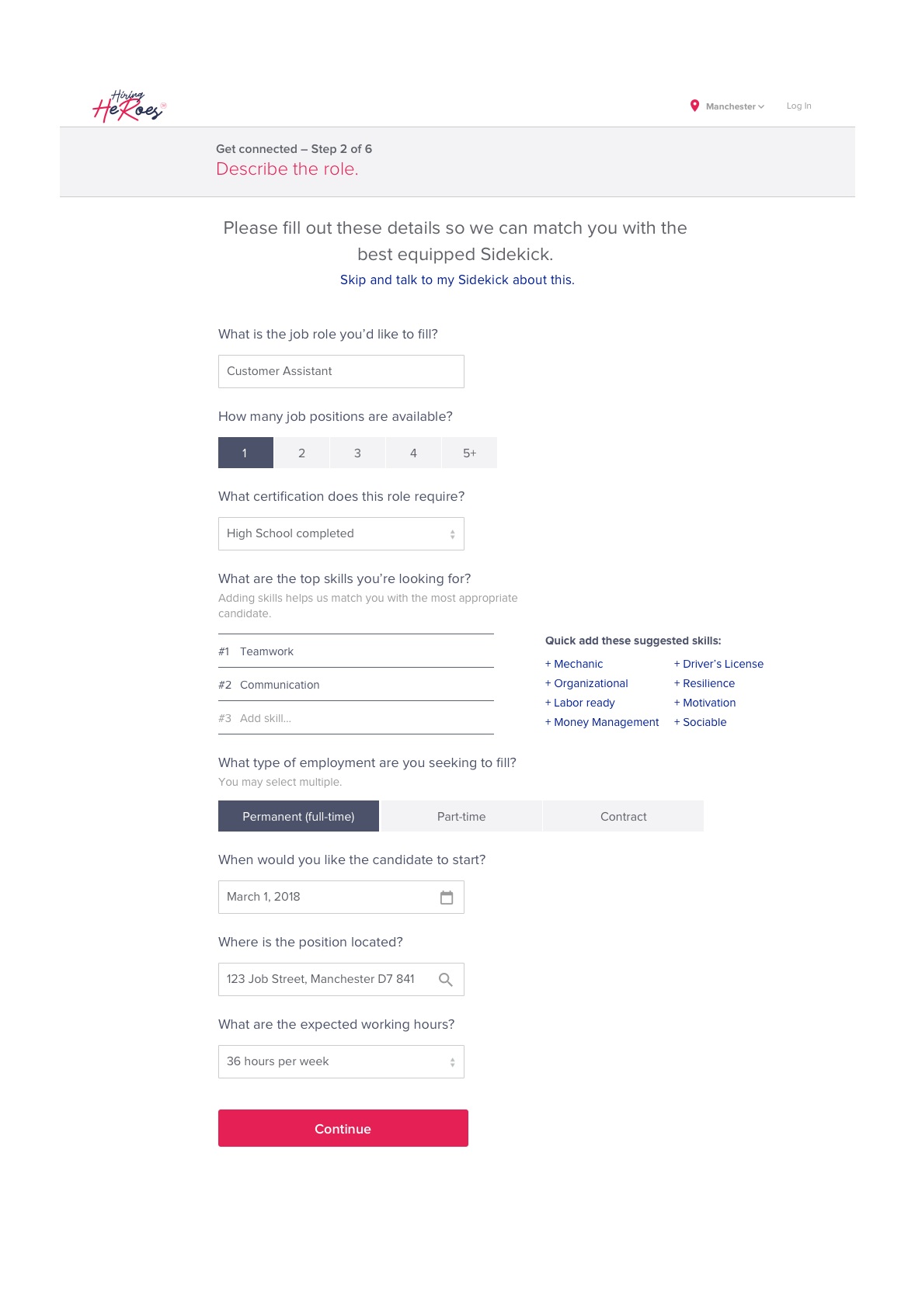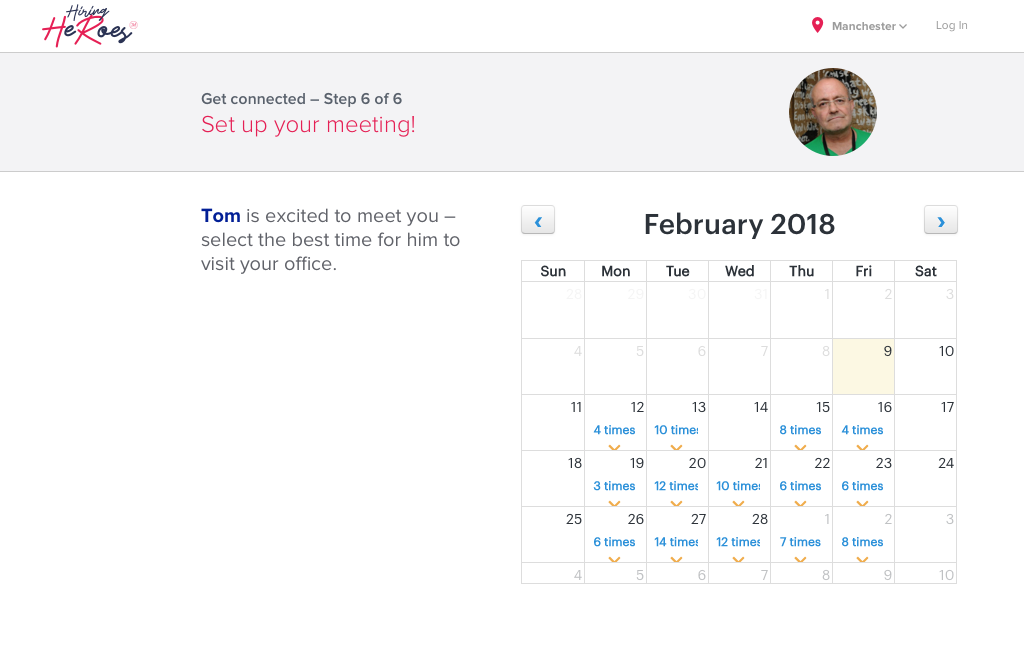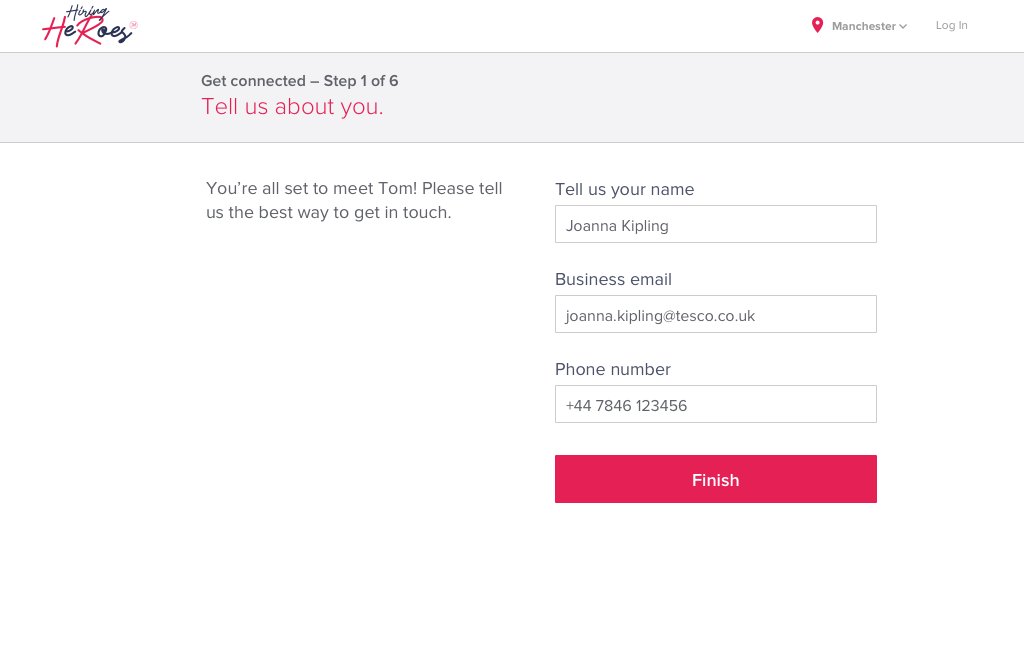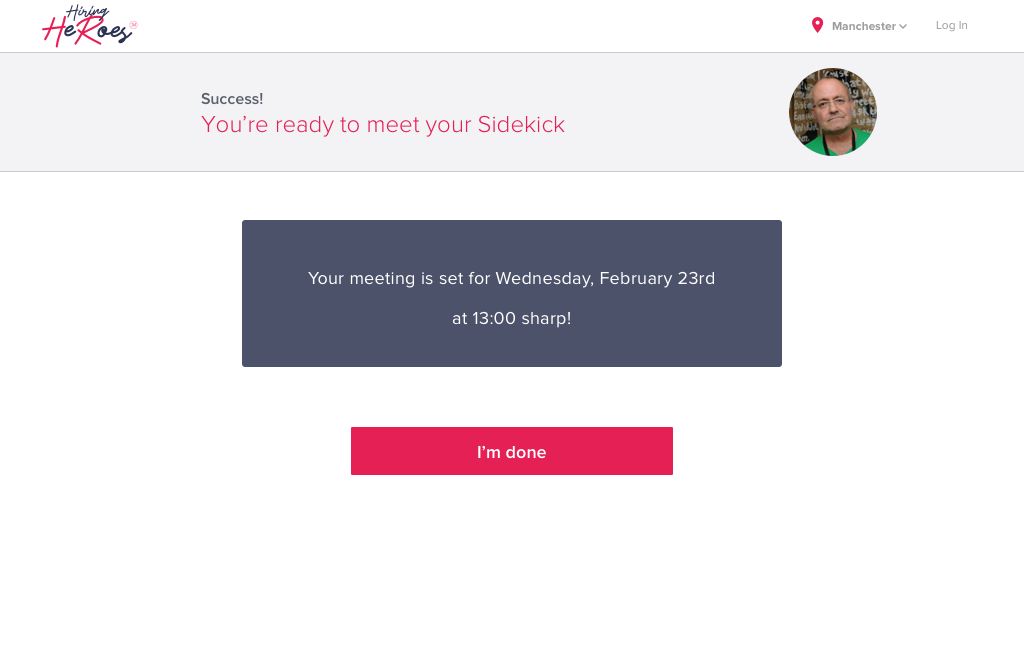Optimizing Opportunities for the formerly homeless
This case study and analysis was written for the Design Thinking module as part of my Master's in Digital Management at Hyper Island, Manchester (UK).
OVERVIEW
This case study demonstrates how a design thinking process was implemented on a real-world design challenge by a group of 6 MA students at Hyper Island. The client, Noisy Cricket, provided the team with the following brief:
How can we improve the system, cultural and personal process to enable those people looking for gainful employment to find their success story?
Given the initial brief and client direction, our goal was two-fold:
Gain insight into the issues underpinning the business barriers to employing people who have experienced homelessness.
Create a scalable and sustainable solution for the employment of formerly homeless individuals.
The journey below will review the my experience applying a design thinking process within a team called “d.Licious” and analyze the effectiveness of some of the tools used in a real world context.
MY ROLE
While the primary goal of this project was in service to the client, Noisy Cricket, it was also an experiential learning opportunity for the team. Therefore, the team shared many roles and responsibilities throughout the project. My core responsibilities consisted of the following:
Stakeholder interviews
Storyboarding
Client presentation
Design Facilitation
Service and user research
UI mockups and prototyping
PROCESS
Setting the Team Culture
Our team kicked things off by creating a “Team Canvas”, a strategic framework aimed at helping team members align on a shared vision, including goals, values, roles and rules. This was an effective starter tool that enabled team members working together for the first time to quickly learn about each other, and uncover strengths, skills, and knowledge that had the potential to be useful throughout our project. However, the effectiveness of this tool is minimised if it is not in a central location for the team to regularly refer to and adjust if necessary in order to support the team throughout the entire project.
Team Culture Canvas
Google’s Design Sprint Phases and Methods Diagram
Phase 1: Understand
The aim of a design sprint is to peak into the future by developing a realistic prototype in order to gauge user and customer reaction before making expensive investments in a product. The first phase, Understand, is structured to align the team by creating shared knowledge through an exploration of the business problem and user problem from all angles. Traditionally, there is a heavy reliance on subject matter experts who can provide existing research and critical insights related to the challenge. For this project, knowledge experts were not readily available, as a result, the team was forced into conducting secondary research and reaching out to potential experts without a guaranteed response.
The team conducted online research by reading articles, examining existing solutions, and compiling a list of potential partners in the industry. Within a short amount of time, a considerable amount of data was gathered and shared across the team. The group synthesized the data by organizing reoccurring information into themes and separating facts from assumptions. Since the provided challenge was so broad, this step was essential in helping d.Licious identify appropriate constraints, develop empathy for the end users, and reframe the design challenge into more focused “How Might We” statements.
“How Might We” statement, drafted and agreed upon by the team
Phase 2: Sketch
After d.Licious agreed on a How Might We statement everyone on the team was excited about, the group moved into the Sketch phase. In the Sketch phase, team members are given time and space to brainstorm solutions to the reframed challenge. The group used a variety of brainstorming tools that initially permitted individuals to produce ideas on their own and subsequently allowed the team to collectively expand on ideas with the greatest potential. Brainstorming encouraged the generation of a wide variety of unique solutions to the identified problem, and helped team members push beyond first ideas. While most of the ideas proposed in the first round of brainstorming were not great, the value of this step became apparent when everyone was encouraged to share their ideas with each other, as weird and impractical ideas led to inspiration across the team. Subsequent rounds of brainstorming became more focused as team members built on the best of each idea and crafted more defined solutions.
Creative Matrix for brainstorming
Phase 3: Decide
Due to the volume of ideas the team generated, it was necessary to have a process for selecting the ideas d.Licious wanted to explore further and test. The Decide phase of the design sprint helped facilitate discussion around ideas applied to the challenge and foster consensus without significant conflict. The team used a combination of two decision making tools to evaluate ideas. First, the team used “Dot Voting” to narrow the number of solutions to the ideas that stood out and were perceived as the most interesting. Once the team had a manageable number of ideas, a “Decision Matrix” was used to give greater weight to the solutions that had the greatest potential with the least amount of effort. This quickly highlighted three unique solutions the team determined to develop and use to collect stakeholder feedback.
Decision Matrix to rank brainstorm ideas
Phase 4/5: Prototype and Validate
The Prototype and Validate phases of the design sprint are closely coupled. In the first half, basic prototypes of an ideal solution are developed with the goal of getting an authentic response from a potential user in the Validate phase. D.Licious cycled through this process several times iteratively, focusing first on quick, sketch-based prototypes called “Storyboards” that aimed to test the team’s biggest assumptions. Since the time investment for producing multiple storyboards was so insignificant, they proved effective at quickly collecting a range of stakeholder feedback, eliminating ideas that were not feasible, and generating new insights. Importantly, they made it easier to make decisions as a team regarding which solution to commit to and served a secondary function of aligning the team on a step-by-step map of the envisioned idea.
Storyboard of the initial Hiring Heroes concept
After collecting stakeholder feedback, it became clear which core solution the team should pursue. In addition, the team discovered elements of another storyboard received enough positive feedback to explore incorporating into the primary solution. As a result, the team went back into the ideation process of prototyping to iterate on the leading concept. This cycle of prototyping and validation was significantly more focused, as the team had a robust foundation of primary research from interviews, and a clearer perspective on the feasibility issues faced by the stakeholders. This resulted in the agreed upon solution to pursue, Hiring Heroes, a matchmaking solution, helping businesses find those individuals willing and able to work.
The final step was to digitally prototype the solution in order to test and refine the idea. The team prototyped the web platform and showed the concept to industry experts who interacted with the product and provided feedback. By highlighting areas of confusion and emphasizing the importance of specific features, d.Licious greatly streamlined the product, removing what was unnecessary and simplifying the minimum viable product.
“Hiring Heroes” home page banner
Results
The team presented a summary of our research and the Hiring Heroes solution to the client, Noisy Cricket, as well as other members of the Manchester business community. With feedback from organisations such as the Co-Op Foundation, KPMG and Manchester Airports Group (MAG), the matchmaking solution received local support and has resulted in the HI Future initiative for further development.
Reflection
While many of the design thinking tools used throughout the design sprint proved to be useful, in the end, the team agreed that a design sprint was not the most effective framework for this particular challenge. The primary value of a design sprint comes from bringing together a cross-functional team of people. One of the most important roles in this cross-functional team is a Knowledge Expert, someone who has a particular area of expertise that is relevant to the design challenge. This is particularly important during the Understand phase where the team builds shared knowledge, establishes a shared vocabulary, and agrees on a long-term goal.
In reflection, working through a more traditional framework for design thinking that makes more room for primary research, particularly user interviews, and secondary research would have made it easier for the team to progress through the project without basing initial solutions on broad assumptions that were quickly invalidated by individuals knowledgeable about the subject.



